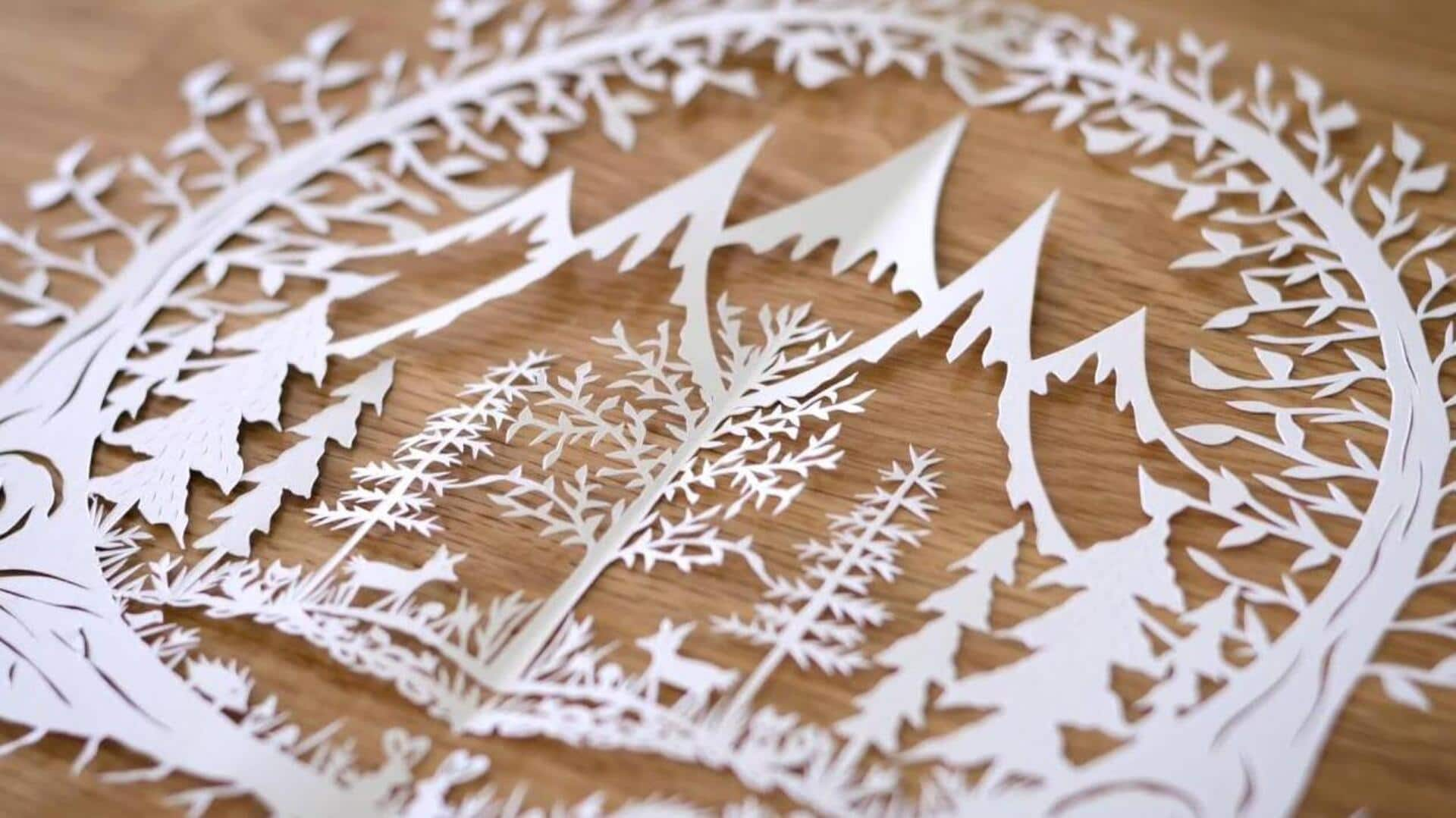
Everything about paper-cut artistry
What's the story
Paper-cut sculptures are an art form that transform ordinary sheets of paper into intricate designs, from delicate flowers to complex landscapes. Artists use knives, scissors, and lasers as their tools, bringing their visions to life with meticulous craftsmanship. These pieces are not only beautiful to look at but also technically demanding, highlighting the artist's skill in turning a simple material into something truly extraordinary.
History
The evolution of paper-cutting
The ancient art of paper-cutting, originating in sixth-century AD China, holds a deep-rooted history spanning cultures. While initially used for religious rituals, it has transformed into a storytelling medium, expressing personal narratives, cultural identities, and social commentaries. Contemporary artists are redefining this tradition, merging modern techniques and themes to create a dynamic platform for exploring current issues alongside conventional narratives.
Equipment
Tools of the trade
The key instruments of a paper-cut artist, while basic, require a masterful touch. Precision knives, particularly the X-Acto knife, are favored for their keen edge and fine control. Scissors come into play for larger cuts or when working with heavier paper stocks. For highly intricate or repetitive designs, some artists utilize laser cutters, pushing the boundaries of detail beyond the limitations of the human hand.
Methods
Techniques that breathe life into paper
Artists use various paper-cutting techniques to add depth and dimension to their work. Stacking or layering multiple sheets of paper creates a three-dimensional effect. Stenciling enables repeated patterns or designs across different pieces. Negative space cutting involves removing parts of the paper to reveal an image or pattern within the uncut areas. This technique requires meticulous planning and execution.
Artists
Inspirational figures in paper-cutting
Rob Ryan's detailed designs celebrate love, nature, and the intricacies of human connections. Bovey Lee's work is a powerful critique of environmental degradation, achieved through meticulous cuts on rice paper. Karen Bit Vejle's large installations tell stories through Scandinavian-inspired patterns, mesmerizing both newcomers and experienced practitioners of the art of paper-cutting.
Growth
Nurturing creativity through practice
Becoming proficient at paper-cutting requires patience, practice, and a steady hand. Novices should begin with basic designs to get comfortable with using tools safely and accurately before tackling intricate projects. Trying out various papers will also help artists learn how different materials influence the final product. This knowledge is key when choosing the right paper for specific effects—like creating delicate or sturdy sculptures.